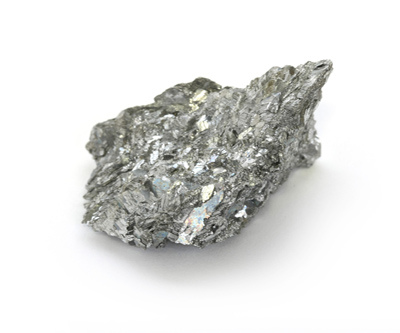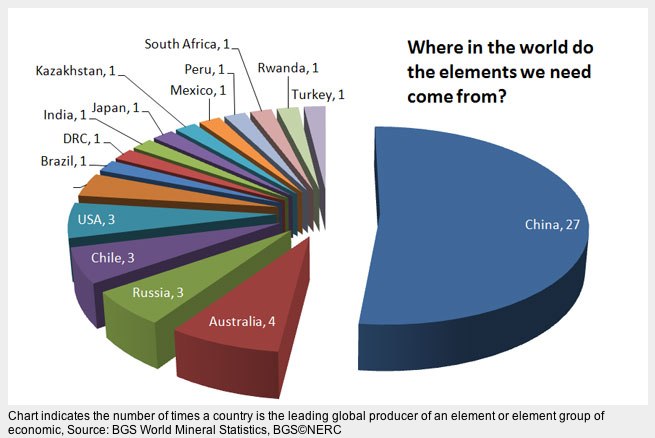Antimony tops metals and minerals risk list, China controls 50% of 52 critical chemicals

The British Geological Survey (BGS) on Wednesday published the latest list of the 52 elements, minerals and metals most at risk of supply disruption because global production is concentrated in a few countries, many with unstable governments.
Surprisingly rare earths used in green technology and defence do not top the list but comes in at number five. Antimony, extracted mainly from stibnite (pictured), widely used for fireproofing is most at risk. The platinum group metals (auto catalysts) hold the second spot while niobium used in touch screens and scanners and tungsten for cutting tools are also at risk of supply disruption as a result of increased competition among the world’s growing economies, political instability, resource nationalism, along with events such as strikes and accidents. China is the number one producer of 50% of the 52 chemicals on the list and produces 75% of the world’s antimony.
China supplies over three-quarters of the world total of antimony with the remainder coming from Russia, South Africa, Tajikistan and Bolivia. The platinum group metals are concentrated in South Africa and Zimbabwe while China produces 95% of the world’s rare earths elements. MINING.com reported last week how the world is scrambling for rare earths after China latest crackdown on its industry sent prices rocketing.
Image of stibnite ore from which most antimony, a native element, is extracted.
{{ commodity.name }}
{{ post.title }}
{{ post.date }}


Comments
Nosveratu
Below is one example of how China produces over three-quarters of the world total of antimony. Copied from source:
http://www.geosurv.gov.nl.ca/minesen/mines_commodities/mining_overview.asp
In 2008, Beaver Brook Antimony Mine Inc. reactivated the antimony mine, located in central Newfoundland, after it had been shut down for 10 years. Roycefield Resources Ltd. opened the mine in 1997, but closed it in 1998 as a result of declining prices. In October of 2009, Hunan Nonferrous Metals Corporation (HNC), the largest antimony company in the world, acquired 100% equity of Beaver Brook Antimony Mine Inc. At the end of 2009, China Minmetals Corporation, China’s biggest metal trader, acquired 51% equity of Hunan Holdings Group (HNG), the state-owned parent of HNC. The state-owned Assets and Supervision Administration Commission of Hunan Province reserved the remaining 49% of HNG.
The stibnite ore, that is mined underground, is fed to the 450 tonne-per-day mill, which uses a flotation method to produce a concentrate grading about 63%. The stibnite concentrate is trucked to Halifax for shipping to China. Antimony is mainly used as a flame retardant in plastics and textiles.
Beaver Brook Antimony Mine Inc. employs approximately 100 people.